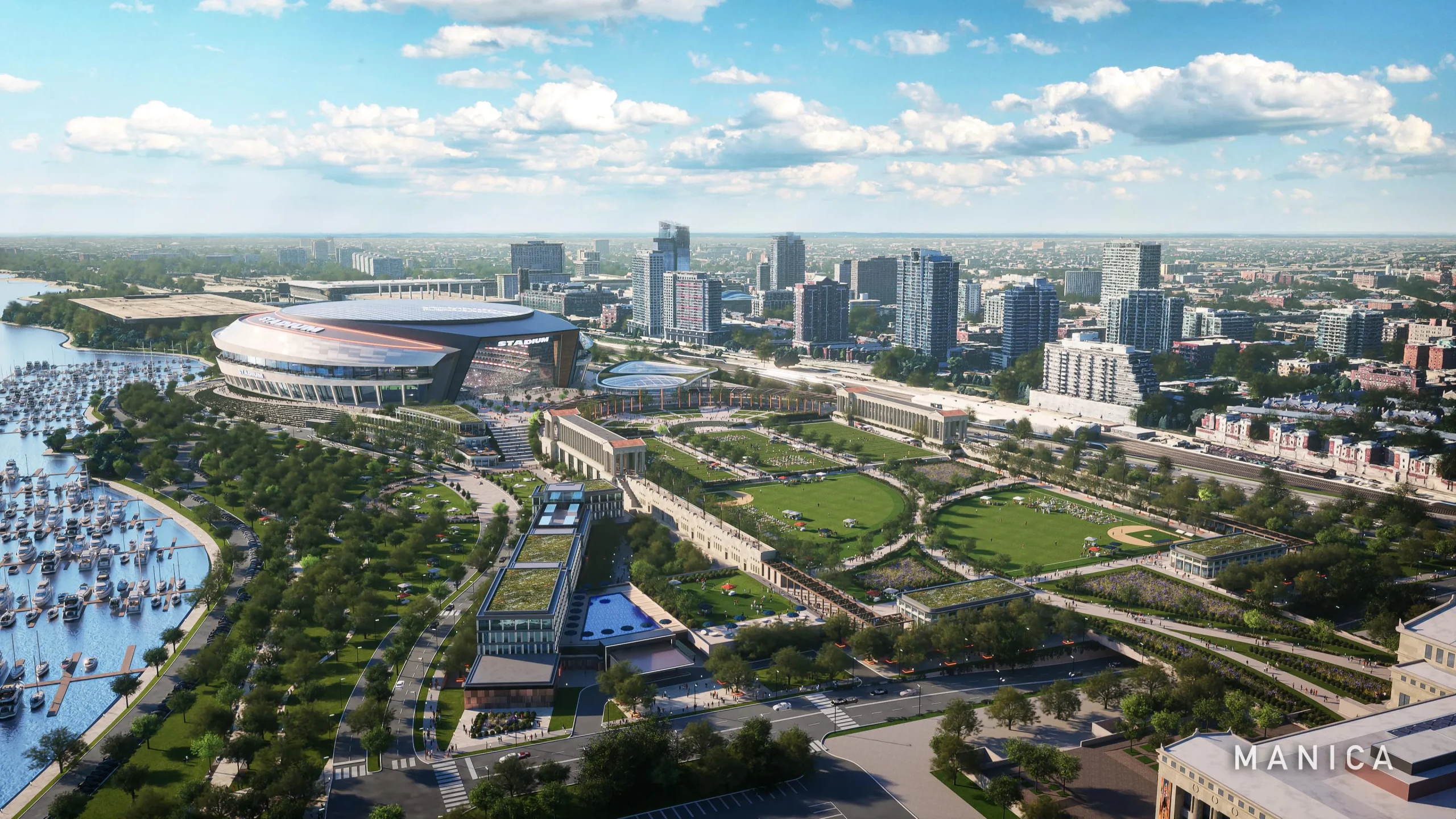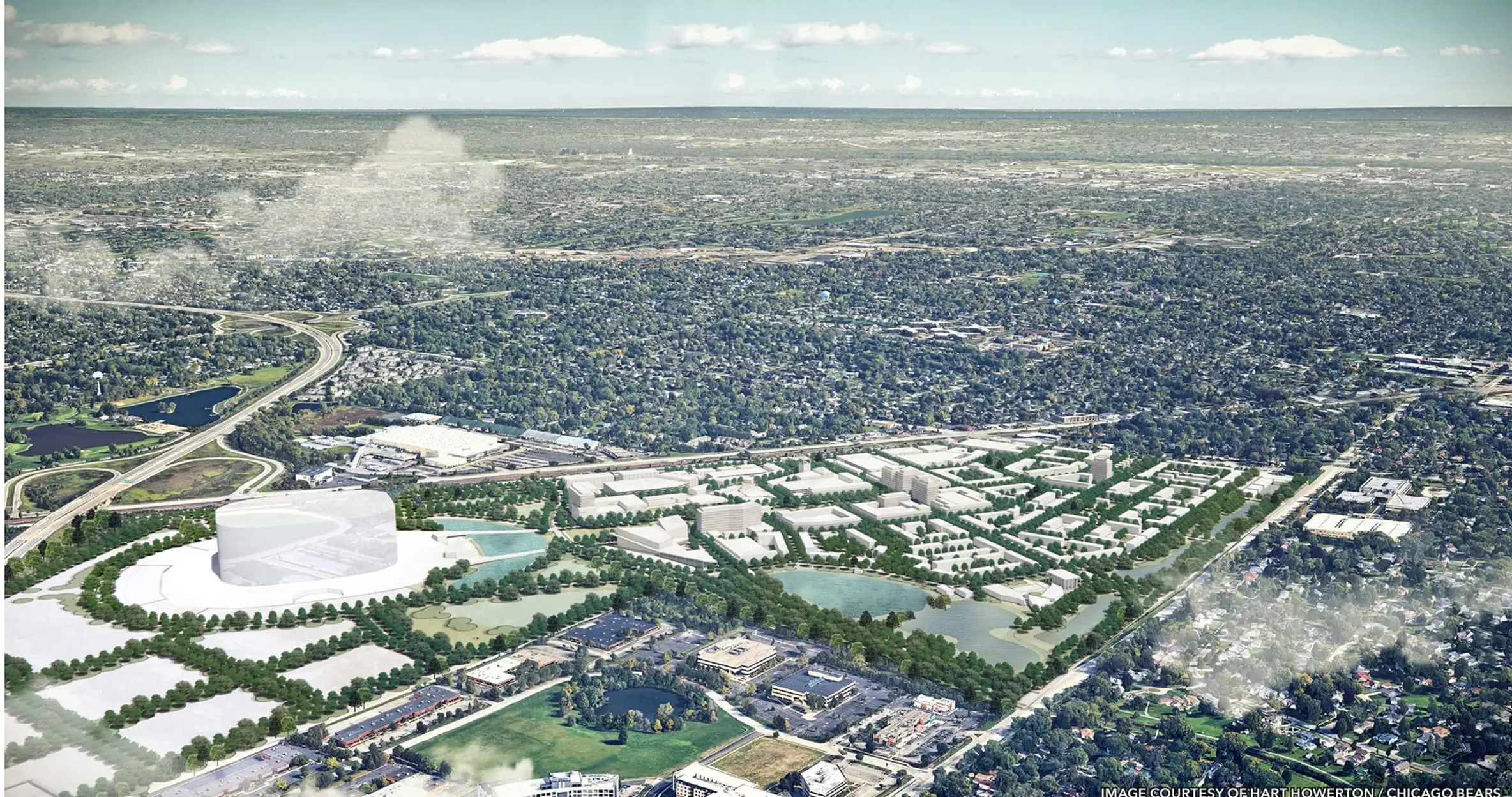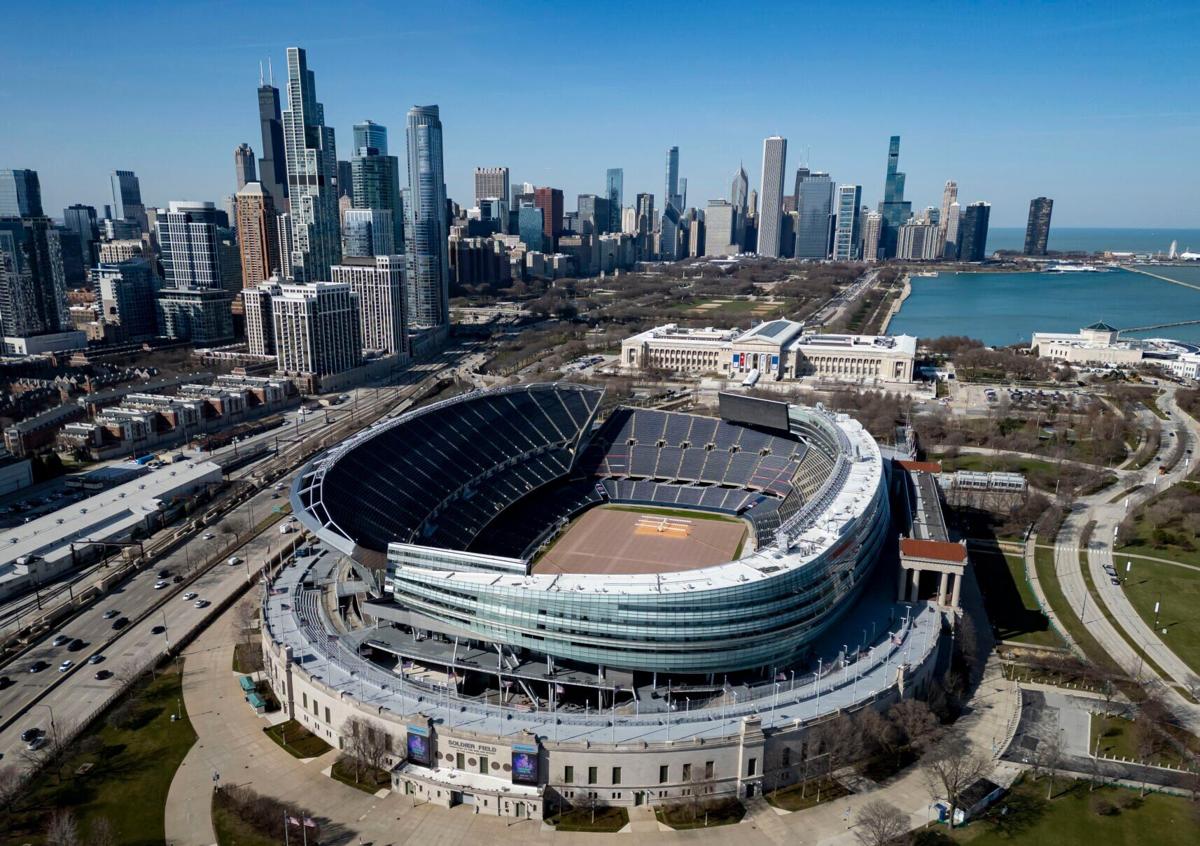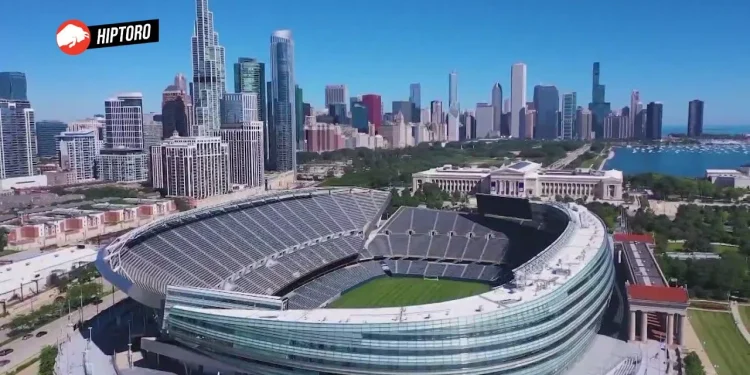In a bold move to transform their game-day environment, the Chicago Bears recently unveiled plans for a cutting-edge, $4.6 billion stadium project. Unlike previous proposals, this vision places the new structure conveniently across the parking lot from Soldier Field, keeping the Bears in the heart of the city.
Spearheaded by Kevin Warren, the Bears president and CEO, the plan was outlined during a press conference filled with optimism and forward-looking statements.

A Modern Home for Chicago Bears
The proposed stadium is a marvel of modern design and ambition. Seating 77,000 fans, the fully enclosed arena aims to set a new standard in spectator comfort and viewing experience. But the project extends beyond just a new stadium—it envisages 14 acres of sports fields and park spaces, fresh bike lanes, and pedestrian paths, all designed to enhance the public’s access to green spaces.
Karen Murphy, the Bears’ executive vice president of stadium development, revealed the budget details, placing the cost of the stadium alone at $3.2 billion. With additional infrastructure enhancements in the surrounding area, the total investment reaches a staggering $4.6 billion.

Chicago Bears Financing the Dream
Funding such an extensive project involves a complex blend of private investment and public funding. The Bears plan to invest $2 billion directly into the Illinois Sports Facilities Authority, complemented by a $300 million loan from the NFL. The remaining costs are expected to be covered by public funding, primarily through an existing 2% hotel tax.
This financial plan places significant reliance on legislative approval for increased borrowing limits and extended repayment terms. The necessity for public funding and legislative backing adds layers of complexity and potential hurdles to the project’s progress.
The Bears have released their plans for a new stadium. 👀
(📸: @ChicagoBears) pic.twitter.com/VBcgBPKOdH
— theScore (@theScore) April 24, 2024
Political and Public Reactions
The response to the Bears’ plan has been mixed. While Chicago Mayor Brandon Johnson has expressed his support, Illinois Governor J.B. Pritzker remains skeptical, reflecting the broader uncertainty about public financial involvement in such large-scale developments.
Moreover, the ISFA is still shouldering $629 million in debt from the 2003 renovation of Soldier Field, which could make the proposed financial strategy a challenging sell to lawmakers.
Vision Versus Viability
The history of sports facilities in Chicago, and indeed across the nation, tells a cautionary tale of the challenges faced by teams in balancing ambitious developments with financial and public policy realities. The Bears’ previous attempt to relocate to Arlington Heights stumbled over similar financial assessments and public funding issues.

This time, the Bears hope to break ground by summer 2025, with the stadium slated for completion in 2028, aiming to host a Super Bowl soon after. The success of this plan hinges not only on securing the necessary approvals and funding but also on maintaining public and political goodwill throughout the process.
As Chicagoans and football fans watch closely, the Bears’ endeavor to build a state-of-the-art stadium will test the limits of civic, financial, and sports management in one of America’s most storied football cities. Whether this ambitious project will become a beacon of urban and sports development or another case study in the complexities of public funding for private enterprises remains to be seen.

Source: Yardbarker









